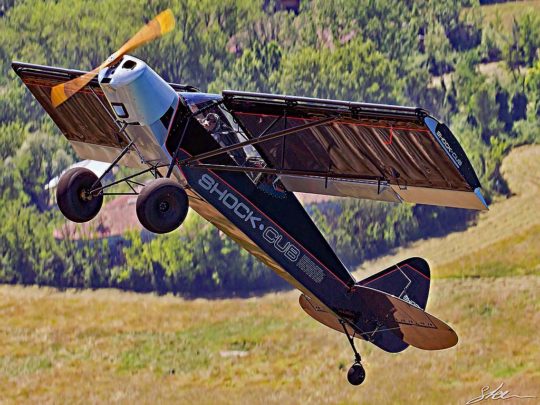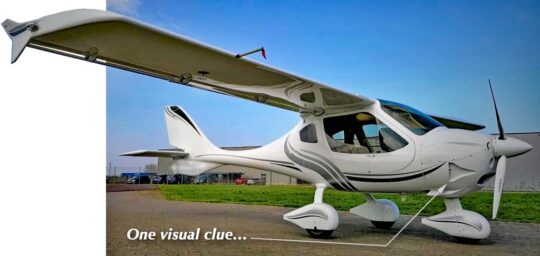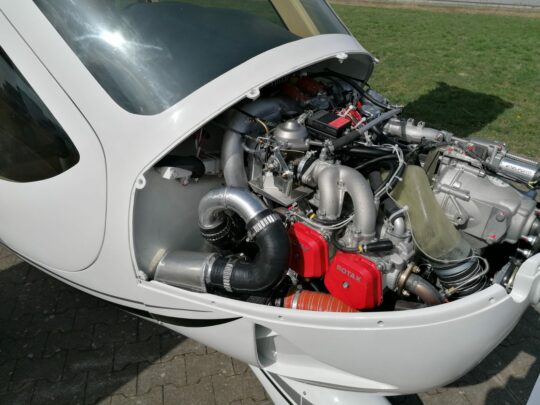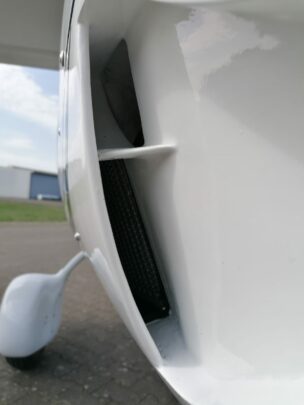Recently I interacted with a reader, someone considering a light aircraft for purchase. He inquired about the ability of ultralights or Light-Sport Aircraft to cope with high density altitude. He raised valid and worthy points but showed a certain lack of knowledge about the capabilities of light aircraft. (We are working on a more detailed article on this subject.)
 Here’s the simple response: light aircraft with modern (read: powerful and efficient) engines tend to perform admirably well in high elevations, higher heat, and high humidity. If you fly almost any of these aircraft in high density conditions you already know they perform sprightly.
Here’s the simple response: light aircraft with modern (read: powerful and efficient) engines tend to perform admirably well in high elevations, higher heat, and high humidity. If you fly almost any of these aircraft in high density conditions you already know they perform sprightly.
In contrast, I logged hundreds of Cessna 150 hours from my days as a flight instructor, and — with a similar amount of power as most LSA but also quite a few more pounds — that aircraft definitely does not perform as energetically.
So, a higher power-to-weight ratio is good, but do limits exist?
Welcome to CTLS GT 914T
“Flight Design is pleased to announce the availability of the 914T option for the CTLS GT 2020,” the German company announced today. “CTLS GT with the turbocharged Rotax 914 plus a large intercooler greatly improves the climb rate, cruise speed and high-altitude performance on Flight Design’s most popular model.”
CTLS
“We are very excited to finish development of this new variant of the CTLS GT,” said Daniel Guenther, managing director of Flight Design general aviation. “The design team did a beautiful job integrating the Rotax 914 with the turbocharger and intercooler into the new longer cowling of the CTLS GT 2020. From the large NACA inlet (photo) and the custom welded aluminum piping, the engine compartment is just a thing of beauty,” said Daniel.
CTLS GT Turbo incorporates all the new features of the GT 2020 model including the longer, more attractive cowling with improved cooling and cabin heating, new prop spinner, and new low drag wheel pants for improved performance. Equipped with a full Garmin avionics suite including dual G3X screens, the CTLS GT is a thoroughly modern aircraft that can reach 140 knots (TAS at altitude) and can climb at better than 2,000 feet per minute.

The first CTLS GT will be shipped to an owner in South Africa, which has both high temperatures and high elevations. Flight Design believes the new model “should be just great for operating in those more challenging conditions.”
With the addition of the Rotax 914T option, the long-running CTLS extends its range again. Various models are available as a European 600 kilogram (European) Ultralight, an ASTM-compliant Special LSA, or as an EASA-certified aircraft. Models are available with the Rotax 912, the 912iS and now as a turbocharged performer as the CTLS GT 914T.
“What? No Rotax 915?”

Since the start of Light-Sport Aircraft, Flight Design has been represented in America by Tom Peghiny, proprietor of Flight Design USA. He’s everyone’s go-to guy for all things CT.
“Flight Design chose the Rotax 914 Turbo for the CTLS 2020 GT airframe for several reasons:
- “Engine weight and size were perfect for the CTLS airframe with no structural modifications required to the existing airframe.
- “Top speed at altitude was also within the existing CTLS limits, so no long test flight program was required to make the 2020 GT turbocharged variant.
- “Because the 914 has a similar configuration to the often-installed 912ULS and 912iS, no major firewall-forward changes were needed to fit a 915.”
Tom added that he is gearing up for the company’s display at EAA AirVenture Oshkosh 2021 where he will lead the announcement of other Flight Design products; aircraft will be on exhibit in space 94.
Here’s a review of the CTLSi with the 912iS engine. Most of the video regards the airframe that remains the same on the CTLS GT 914T.


Turbocharging is a poor man’s extra horsepower at great fire risk. God forbid one has an oil pressure failure. Supercharger is safer, requiring a little extra power. After all there is no free lunch. Had the RAF used turbochargers on Spitfires, more would have been lost to engine fires than to the Luftwaffe.
New turbocharged car engines will only make 100,000 miles at best and only serve an emissions problem. IMO, a piston engine should never be on an aircraft in this day and age, period.
Well, thankfully, the vast majority of aviation enthusiasts are endowed with the knowledge and judgement to know that your views are unfounded, extreme and based entirely on conservatism, rather than logic or technical knowledge. In short, turbos have been used on piston engines since 1957 and there is no increased pattern of catastrophic failure (engine or structural) to aircraft fitted with turbo chargers. You probably think LSAs in general are a “poor man’s C150”, LOL.
The Rotax 912 ULS or 912 S requires no carburetor heat. Why not? I have been unable to find an answer; not even on the Rotax site. Some countries in Europe require carburetor heat For all Rotax engines. There is an aftermarket kit that accomplishes this.
Hi Ronald, great question. The answer is simple really, turbochargers heat the air when it is being compressed. You will note that turbo-charged engines have the exact opposite problem and many, like the 915iS Rotax, must have an intercooler to control the high inlet air temperatures. So, regarding the question, “Do they require carb heat?” The answer is no, they don’t.
Thanks, Eric — and for the few pilots on the planet that may not know, Eric Tucker is a longtime expert in all-things Rotax.
However, Eric, Ronald’s question surrounded the carbureted models. I believe his question was, “Why don’t they need carb heat?”
Dan, my bad, I thought for some reason he was referring to the 914. Carb engines, any carb engine without turbo, must have carb heat. We see requirements in the installation manual that read: REQUIREMENTS ON THE AIR INTAKE SYSTEM WARNING
Non-compliance can result in serious injuries or death!
Carb icing is a common reason for engine trouble. No implements are included in the
supply volume for preheating of the intake air. If an airbox of non-Rotax origin is
used provisions for preheating the intake air have to be made to prevent formation of
ice in the intake system. Preheating of the intake air will result in performance loss because of the lower air density
The air intake system from Rotax is shown and it has a dual air inlet, one for ambient air and one for pre-heated air, this is a standard used by almost all carb engine suppliers to introduce warm air when flying in conditions that may have carb icing. The FAA has lots of references like AC 20-113 on carb ice. In general it is up to the builder/OEM to make a system to fit that particular aircraft model to reduce carb ice risk.
So how do the many Rotax carb engines get away with no ice prevention system? Mostly that is just luck in that designers are lazy (my opinion) and just do the bare minimum to get aircraft to fly. The pilots normally in our classes do not fly in clouds and avoid bad weather flying. Let’s look at some of the older Rotax powered aircraft and you will note a lot had a simple cowl over the engine. The carbs on the back of the engine also have an exhaust pipe only a few inches from the float bowl, for the most part people did not put the protective tray under it as shown int he installation manual. The result is most are flying with full time engine pre-heat and not prone to ice. Newer aircraft designers have done a much better job and most now come with some type of pre-heat for the air built into the OEM airboxes. The Rotax airbox is available as an accessory also. if you cant use an airbox, or simply don’t want to engineer your own, there are carb body heaters available as well. Most for the Rotax are a hot water system that circulates a small amount of water to a ring mounted on the carb base near the intake manifold.
Sorry for the long story, just me…
I have had two instances where I needed carb heat on the 912ULS. Both times the only indication was high cylinder head temp. Pulled the carb heat on and problem instantly resolved.
We are the importer of the CTLS 2020 turbo to South Africa, and just want to point out, that the test results achieved ( speed and climb) had the “Tundra Tyre” option installed, so 6. x 6.00 tires, which makes the CT even more capable on gravel and grass runways.
Great to see them put on the intercooler. This makes a world of difference for any turbocharged engine. I know many installers do not use one on the type 914 but they should really reconsider. The higher you go the more the turbo has to spin up to make pressure. As it is compressing this air it becomes hot, at high altitude the compression can get the air extremely hot and start to rob you of performance. Adding an intercooler helps solve this problem and will allow you to maintain full power climbs for the full 5 mins out of your airfield if you need it. Good job Flight Design.